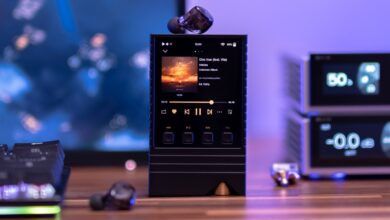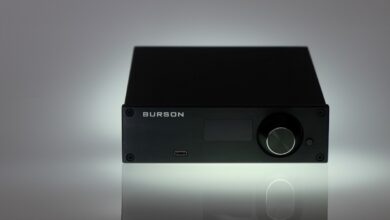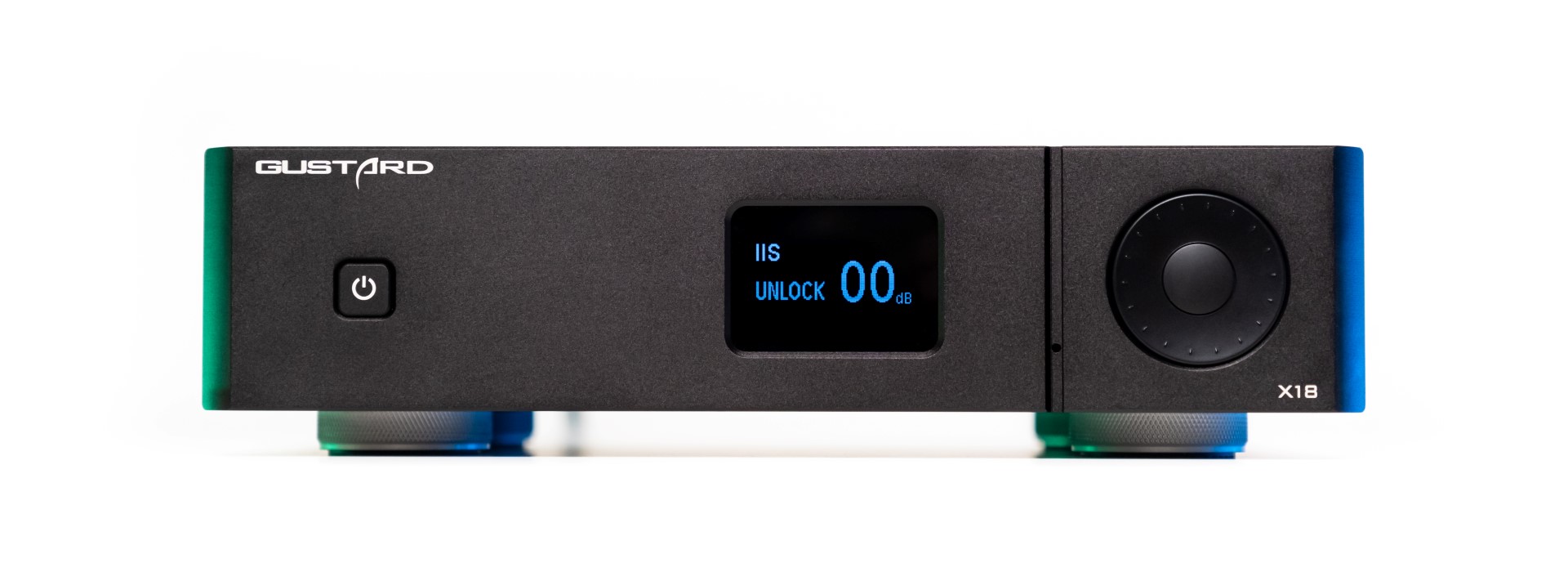
My Video Review:
It’s funny how audio companies are changing their packaging, their appearance and sound tuning thanks to people that are writing about stuff in comprehensive ways. I’m glad that Gustard ditched mini-CD’s, there is finally a pseudo-English website and I’m glad that Gustard used some articles as constructive feedback, crafting better looking and nicer sounding units. Take my Gustard X16 review as a good example, while on paper it had everything to succeed, including world-class measurements, the final outcome wasn’t so rosy when music started playing.
Companies like Gustard do not rely on paid advertisements, but on people’s feedback that are spreading the words as wildfire. My most read article to date is Gustard’s X26 PRO review that shook the foundations of High-End audio at affordable prices. Is high-end audio about price no object components or about making music alive as if listening to it for the first time? For me, it’s certainly the later and I’m glad we can arrive there safely without eating less pudding and X26 PRO is a testament to that. X16 on the other hand felt neglected and unwanted, as it didn’t sound as visceral, open and wide, nor as full-bodied as its bigger brother was doing so skillfully. X16 reminded me about my student years: being shy with dynamics, thin in the midrange and too skinny when landing punches below 50 Hz and that was…perfectly fine, considering its affordable status. Instead of putting an excellent mid-level converter on store shelves, Gustard left a bitter taste in my mouth. They closed their labs and hundreds of pizzas and bottles later, a much beefier converter was presented to the world. Enter the newest Gustard X18 that uses a higher spec D/A converter, a beefier LPF and I/V stage, spits a higher voltage output, while retaining the same minimalist look and outstanding build quality.
X18 looks like a feature packed, modern DAC that is wrapped in a fairly small aluminum enclosure with a mid-fi price tag attached to it. Will it improve every single aspect that bothered me on X16, or will it perform in a similar fashion and be remembered as un unsuccessful coup? Let’s find that out together.

Unboxing & Package Contents
X18 came in the same packaging that X16 and H16 are shipping with. Everything was double boxed and that’s common practice for units coming from Asia. The product box was moderately sized, but quite heavy, already telling that I will be dealing with a nicer DAC. X18 was wrapped in a blanket for additional protection, while its accessories are staying in a pocket of foam. All Gustard units are coming with higher quality USB cables and X18 is no different. It uses gold-plated connectors and thicker conductors compared to no-name USB cables, Power Sync made this one and I like it already. You can find a power cable, a warranty card, the same remote control that is bundled with all their devices and luckily there aren’t mini-CDs anymore. A user manual, spec sheet or a quick start guide weren’t provided; however, you can download its user manual from here.

Design & Build Quality
X18 looks pretty much the same to their X16 and A18 units that I’ve tested a while ago, with the exception that there’s finally an On/Off button on its front panel. It looks like a miniature version of their A22 and X26 PRO units. I see a fully CNC-ed piece of aluminum, with just a thick front and back plate attached to it.
There aren’t visible screws on this one, only on its back panel. It is painted in matte black and you can have it in matte silver if you please. It looks plain and simple, but it’s well-built. I see the best aluminum feet in the business, the same ones that are supporting their biggest units. Gustard didn’t spare pennies building its case, it screams high quality craftsmanship and I cannot complain about its build quality. It follows the same design language of all Gustard components, that volume wheel on the right and the small OLED screen in the middle is so…Gustard. It has the same width with the Topping D90SE, SMSL M400 and it’s about the same width with a Benchmark HPA4 and Ferrum OOR + Hypsos.
Its side and front plates have rounded edges that won’t trigger my OCD when swapping amplifiers, DACs, cables or headphones around it. I’m confident that I won’t see scratches or dents anytime soon.
At about 2.5 kilos or ~5.5 pounds, it’s considerably heavier than its competitors like Topping D90SE and SMSL M400. A heavier unit suggests that a linear power supply and a bigger capacitance are sitting inside, building confidence that I’m dealing with a serious unit.

Controls & Connectivity
X18 has a clean front panel with just a simple monochrome OLED screen in the middle, an On/Off button to its left and there’s a volume wheel on the far right. If you want to use it in the DAC mode, select its maximum volume at 0 dB and if you will be using it as a DAC plus preamp combo, then select your desired SPL via its remote or volume wheel. A button is located in the middle of that wheel, a short press lets you choose a digital input and a long press will engage its user menu. Gustard is not forcing the use of its remote when changing settings, you can do that single-handedly, unlike other companies that require a remote for advanced settings.
On its back you can spot a wide variety of digital inputs as: USB, I2S, Optical, Coaxial and AES. Do note that USB and I2S are the only inputs that will decode natively DSD material or PCM up to 32-bit 768 kHz. It is a fully-balanced DAC, offering a pair of XLR and RCA outputs, there’s a 110V or 220V voltage switch, a Bluetooth antenna socket, an AC inlet and a power switch.
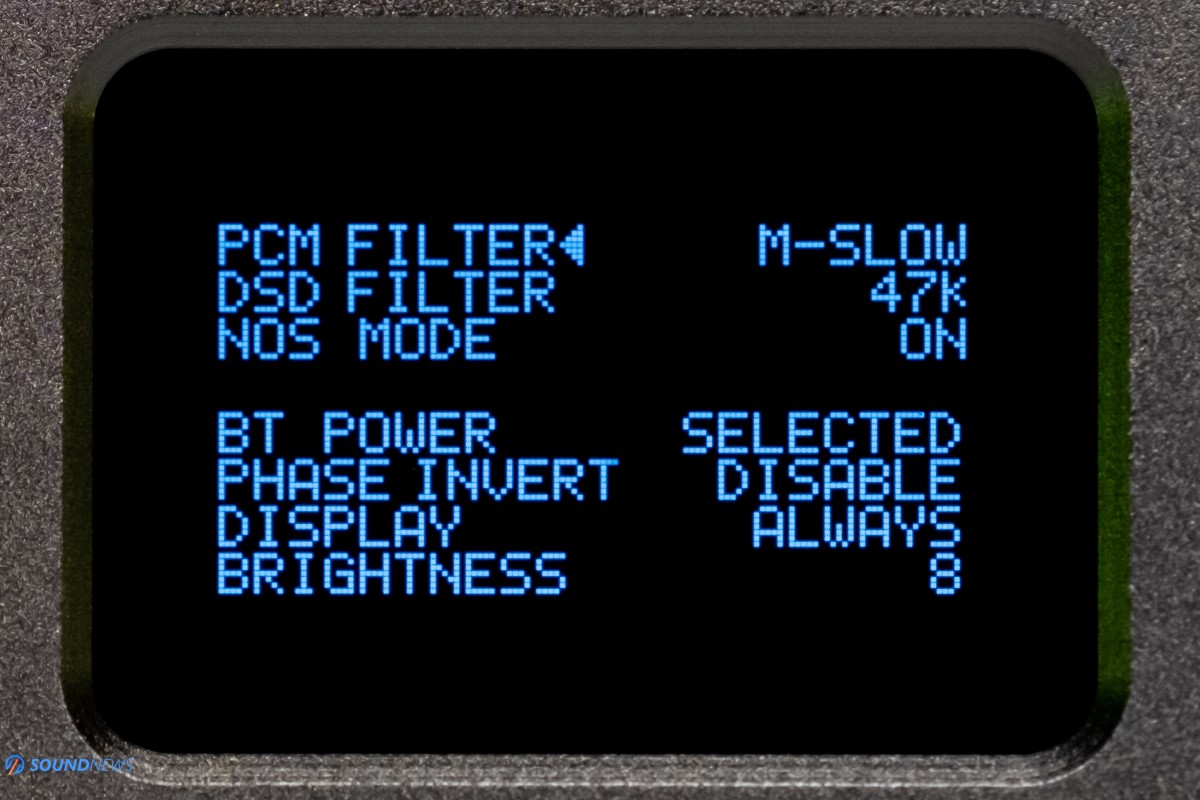
Menu Settings
You can access its user menu by pressing the Menu button on the remote or by a long press to the button on the far right. Once you do that, a user menu like this will appear:
- PCM Filter: 7 positions. These will be altering the FR past 20 kHz. If you want the fastest treble roll-off, go with H-FAST and if you want the most extended treble response go with M-SLOW. Subjectively, I can’t spot a difference between them, since I don’t possess super-human hearing.
- DSD Filter: 4 positions. You are going to select the roll-off of the DSD content, 47K position sound more natural to me.
- NOS MODE: 2 positions, it’s either ON or OFF. In OFF position it will work as a regular oversampling DAC and with its ON position, there is no digital oversampling, acting as an old-school Non-Over-Sampling DAC (NOS). If you want a smoother top end and a warmer sound, then enable its NOS mode
- BT Power: SELECTED or ALWAYS. Self-explanatory, leave it at Selected if you are not using the BT input that often.
- Phase Invert – 2 positions, DISABLE or ENABLE. Self-explanatory, leave it at disabled.
- Display: 2 positions, ALWAYS or AUTO OFF. If it bothers you that much, leave it at Auto Off. I’m leaving it at Always, so I can check the sample rate and the volume level at all times.
- Brightness: 8 brightness positions, none of them are completely dimming its display. The lowest position worked great at night though.
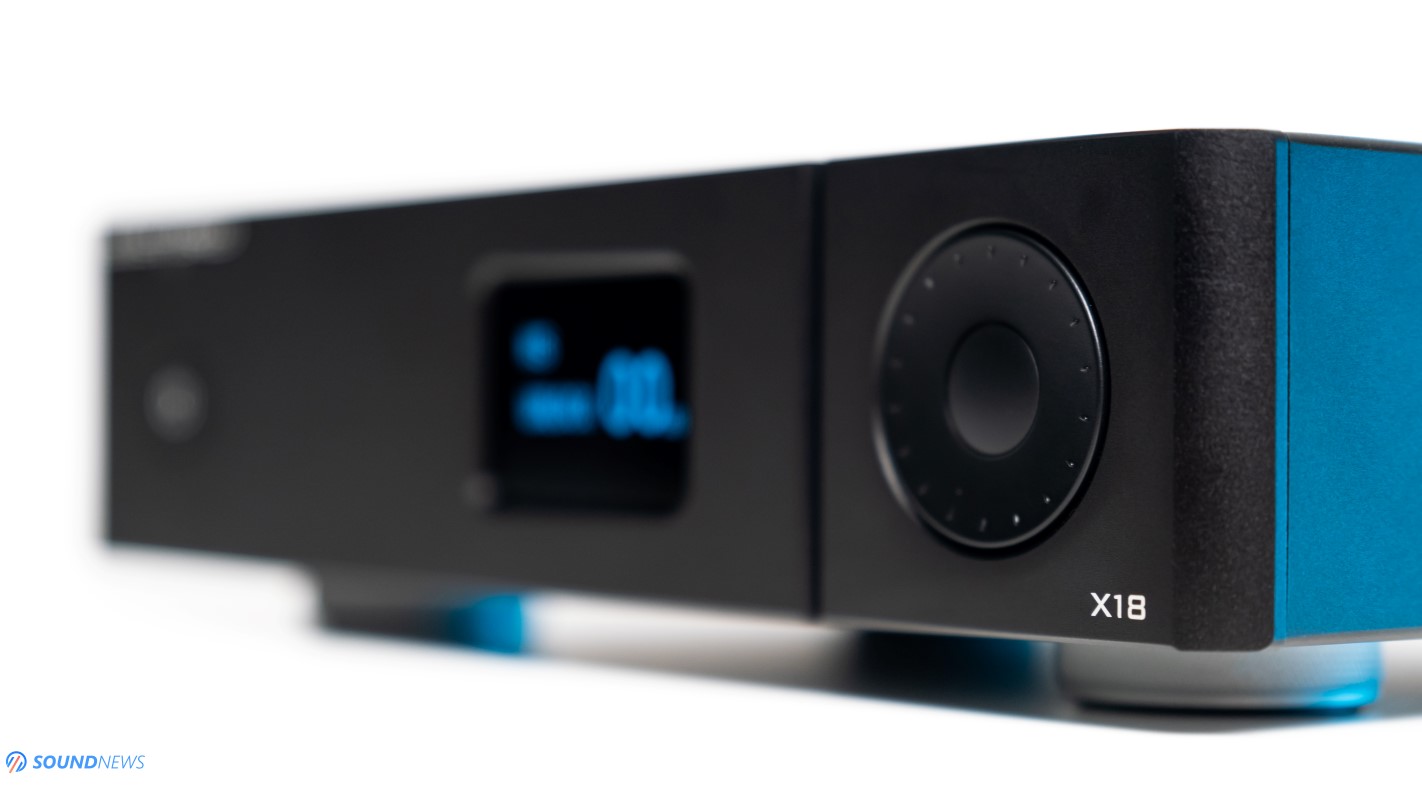
Tech Inside X18
The biggest novelty is that Gustard ditched two ESS-Sabre ES9068AS silicon in favor of a single, but higher performing ES 9038 PRO DAC chip. As I have explained multiple times, ES 9038 PRO is a very interesting silicon, as it can work in mono, stereo or 8-channel mode with either current-mode or voltage-mode operation. Most ES9038 PRO designs that are I know of are using it in stereo configuration with a voltage mode operation due to a much lower cost and R&D. However, if you want to squeeze maximum performance out of it, this particular chip gives a lower total-harmonic-distortion, bypassing the IMD hump if current mode is being used. This configuration adds a lot to the cost, as a powerful I/V (current to voltage) conversion stage needs to be built around the ES9038PRO. The better the I/V conversion stage is = the higher precision can be squeezed from the DAC chip and the same can be said about its operation mode, as in mono mode it will output a higher dynamic range.
Gustard went overkill with the I/V conversion stage, as they used eight OPA1612A for the I/V conversion stage, meaning that all 8-channels of this DAC chip are being used. X18 performs an independent I/V conversion for all 8 channels and then connects them in parallel, squeezing the best this silicon is capable of. As for the OPA1612 themselves, those are regarded as warm, smooth and natural sounding, exactly what a super-linear silicon like ES9038 PRO really needs.
Gustard was plenty of experience with Altera MAX V FPGA used for PLL shaping, clock management and DOP modulation and the same super precise femto-second clocks from Accusilicon AS318-B can be found in here too. As a side note, Gustard A22 and SMSL VMV D2 which are considerably more expensive are using them too.
The power supply and filtering are on pretty high level, a linear and regulated transformer will be doing the cleaning service and several voltage regulators will be taking that power, will be lowering the noise floor even more, offering back a much cleaner power to the critical analog and digital circuitry.
Gustard used the most advanced Bluetooth chipset on the market, the notorious CSR8675 that supports all the best Bluetooth codecs as LDAC, AptX, AptX-HD, AptX-LL, AAC and SBC. Add the latest version 5.0 and you can be sure that BT signal will be strong. Its Bluetooth antenna on the back is working as a signal booster and I will be testing its range very soon.
You can also spot the best USB input chip from XMOS, the famous XU216 that supports all the highest sampling rates as 32bit 768 kHz PCM, DSD512 and it can even unfold MQA files.
I’m happy that Gustard went back from a 4V output on X16 to a 5V XLR output on X18, that will be squeezing a little more power our of their H16 amplifier and out of any other headphone, integrated or power amplifier for that matter.
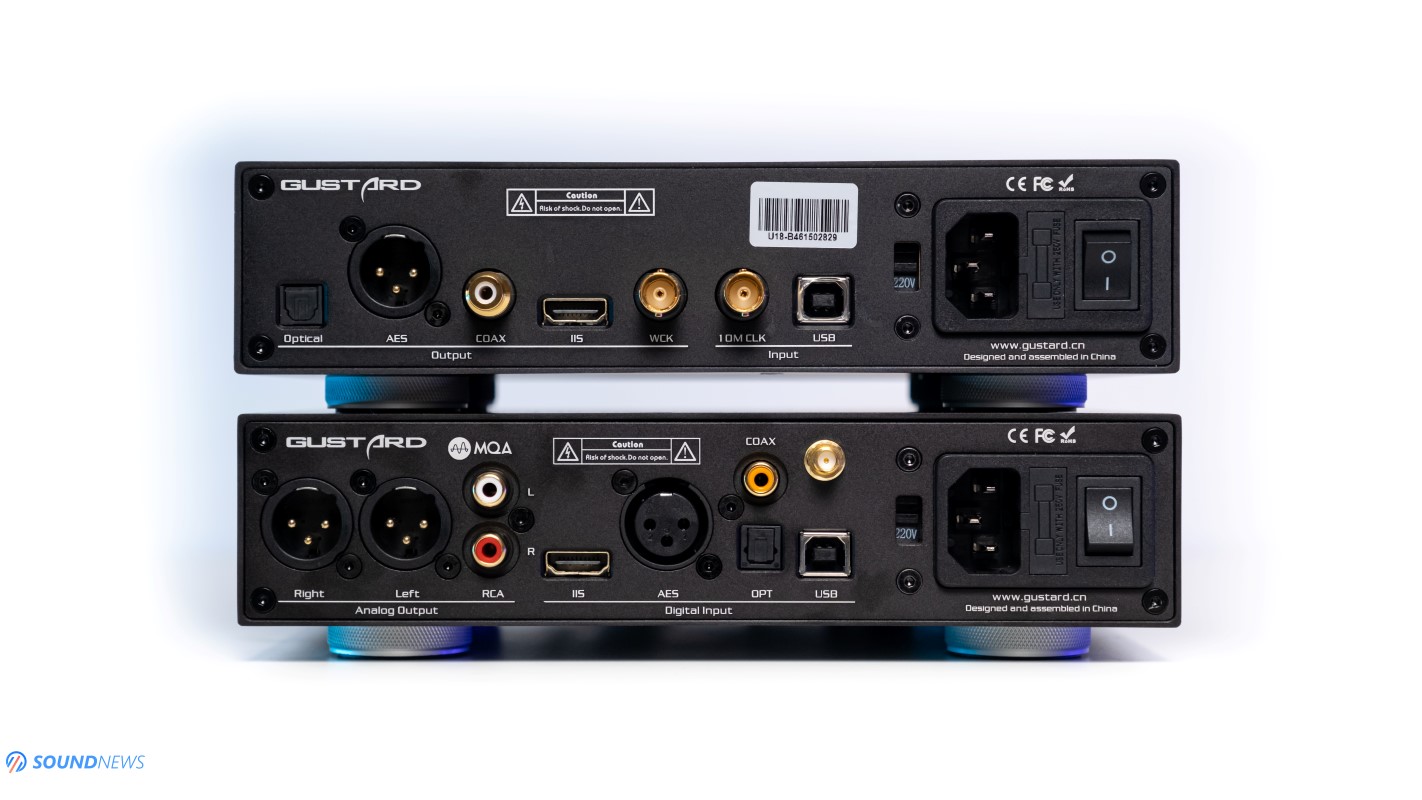
Tech Inside U18
U18 is Gustard’s newest digital-to-digital converter (or DDC for short) that could improve the performance of any DAC, especially if the WCK or I2S outputs are being used. If you are using your DAC with a computer or MAC via USB, then a device like this can solve all the issues associated with the USB ports.
Its USB input is galvanically isolated with the help of five isolators, cleaning up all the noise that might travel from the USB ports, completely eliminating jitter, ground loops, noise and hiss.
U18 rocks the best crystal clocks that Accusilicon is making right now, the only ones that are marketed as High-End Audiophile and those are the AS338 that are three times the cost of AS318 – that are lurking inside the X18. Its phase noise and short-term stability are far ahead of similar crystal clocks, providing a incredibly low jitter of only 38 femtoseconds, which greatly improves the timing of the DAC that follows. U18 can even use external clock generators (as their C18 for example) thanks to an Ultra-Low Noise Clock Synthesizer that Gustard developed, calling it K2.
An Altera MAX II FPGA will be isolating the I2S signal, reshaping it by removing traces of jitter introduced by galvanic isolators and last, but no least, a 20W linear transformer will be providing clean and regulated power to all its circuitry.
In other words, a DDC converter like this will be completely removing USB noise, will reshape and clean up the signal, will reclock it and then send all that data via IS2 directly to the DAC chip inside your unit, completely bypassing a digital receiver chip (like XMOS for example), for a clearer and time-accurate signal.
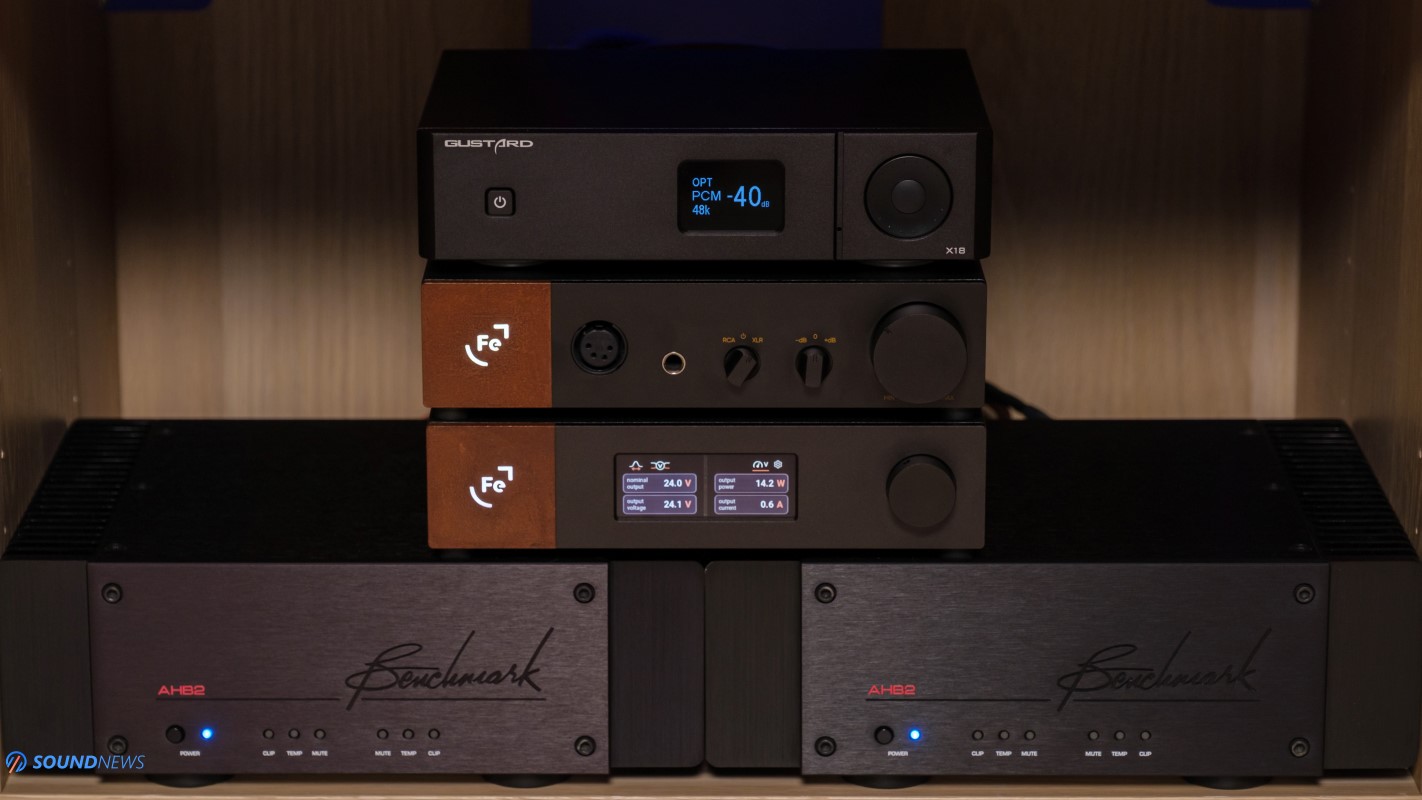
Test Equipment
X18 together with U18 were used in a headphone setup first and then in a stereo setup. In the living room I’ve tried it as a DAC only unit, leaving the preamp duties to a Ferrum OOR + Hypsos, followed by two Benchmark AHB2 power amplifiers used in mono mode driving a pair of KEF Reference 3 standfloor loudspeakers.
In a headphone setup, it was connected to its soul mate H16 balanced headphone amplifier, or to (much) higher performing units like Ferrum OOR + Hypsos and later on to the Enleum AMP-23R, driving several high-end planar-magnetic headphones and a bunch of dynamic headphones. Okay folks, enough with the talk, my ears are itching for some music, so let’s hit some ear-drums!
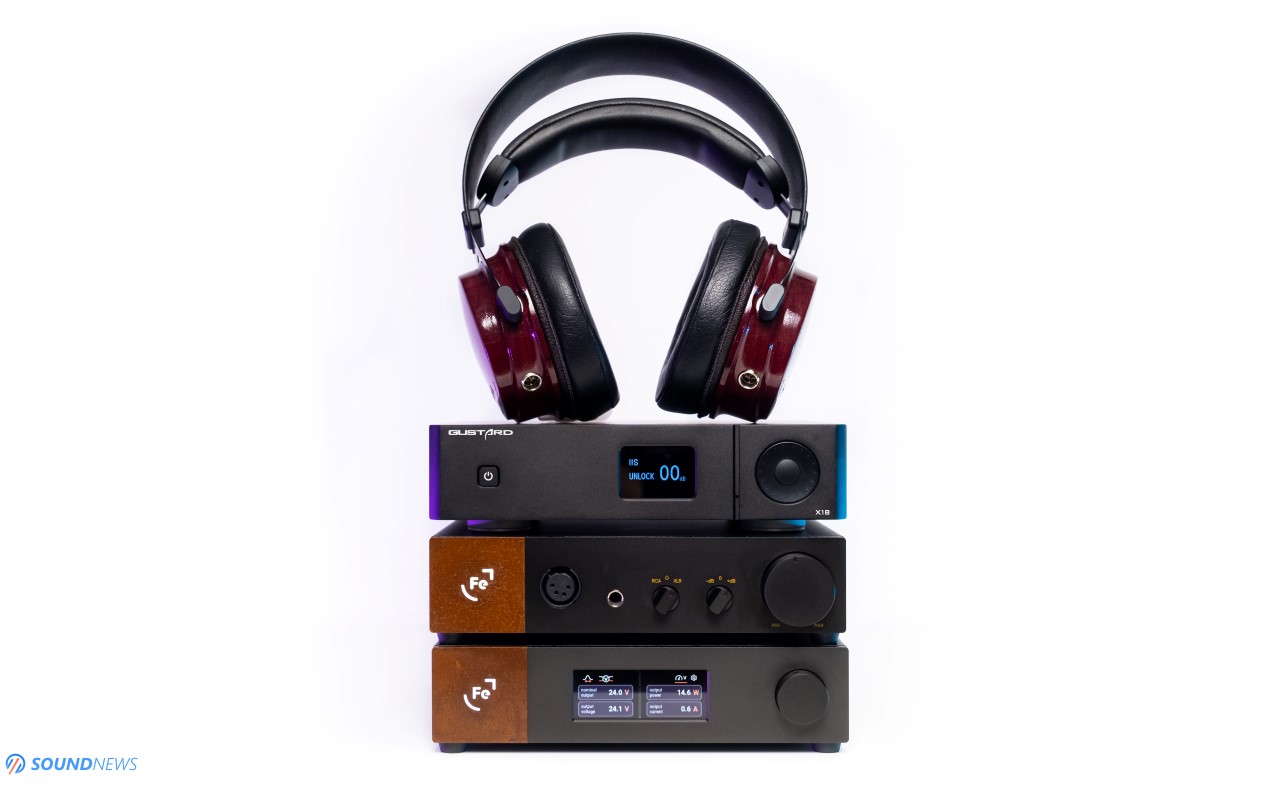
Sound Performance
I. Preliminary Impressions
Before dropping my Gustard X16 review, a well-known website published their extensive measurement analysis, mentioning that it could battle with the best of the best and those words got me seriously excited, as finally I’m going to try out the second-best measuring DAC of that moment. My excitement levels were sky high, its instrument grade measurements hinted that I will be getting the last drop of information from my tunes and it did. It was extremely precise, proving that Gustard yet again perfected their skills. It was ultra-revealing, transparent and completely noise-free, easily fighting with pricier, bigger and heavier converters. It was linear and extended in the frequency response, everything seemed to be right from the get go, but when it came to sending shivers through my spine, making me smile and toe tap, then X16 was…above-average, outclassed by their own X26 PRO and by many other units. While I don’t possess superhuman hearing or expensive audio analyzers, it was clear to me that measurements were telling me only parts of the big story, some pages were ripped clean and I needed to rely on objective listening tests. A few months later, X26 PRO dropped at our HQ and even without any kind of burn-in, it was clear that I was dealing with something truly special. Every single aspect that felt lackluster on X16 was improved to unrecognizable on the X26 PRO. Bass notes were swinging in full force and there was so much more in terms of layering and depth, special cues were perfectly rendered, there were more nuances and bigger void spaces in between the notes and more important than ever…I was enjoying my time even on mid-fi setups, something that X16 couldn’t do even on end-game rigs.
Considering all of the above, I didn’t know what to expect out of X18, but after getting to know it better for about a week, X18 started showing me its beautiful side. I’m glad to report that X18 sounds closer to X26 PRO than to X16, as there’s considerably more impact in the lowest octaves, the sound stretches wider and instead of a bi-dimensional sound field, X18 delivers an airier and deeper presentation. Almost everything that I disliked about the X16, felt improved on X18. There was a higher engagement factor, a nicer impact in the lowest octaves, a smoother vocal performance and a warmer overall tonality, while retaining the same cleanness, ultra-revealing nature and noiseless presentation. While system matching was a crucial aspect on X16, that’s no longer the case with X18 – it felt effortless sounding, as if the amp that followed was less important.
I can rarely attribute words as natural sounding to ESS Sabre designs, those words would rarely describe such silicon and yet, will a careful selection of components, everything is possible. When flagship ESS silicon is working in current output mode, rather than in voltage output mode, for unknown reasons the music just flows more naturally, plus a higher dynamic range always hops on board. Gustard did exactly that on X18, mimicking the sound of X26 PRO as much as possible and as a directly result, I can definitely say that X18 retains some natural overtones. The little X18 is both an ultra-revealing unit and a natural performer. There aren’t potholes in the FR, nor substantial rises, it’s not limiting the speed and subsequently the impact that follows and slowly but steadily X18 started growing on me, proving that good sonics could be had even at less than $1000.

II. Adding the Gustard U18 Digital-to-Digital Converter
The fine gents of Aoshida Audio sent me the X18 and a its companion U18 digital-to-digital converter (or DDC for short) that has the same size and form factor. Obviously, it wasn’t made for X18 and X16 owners alone, as you can use it with any DAC you can think of.
Current production DACs already have impressive digital boards, especially the USB receivers have been improved tremendously. That XMOS XU216 for example is already an exceptional low-noise and low-jitter receiver that can solve most of the issues coming from your PC or Mac. Thanks to its processing power (2000 Mips) it can even natively unfold MQA files and send them over to the DAC chip for decoding. With all that said, the USB standard was never conceived as a no-compromise solution, most ground loops are still passing through USB ports, there are still timing errors that are plaguing most laptops and desktop PCs. If you look around, all modern streamers are passing by the signal via I2S and higher tiered units can even sync their clocks via a WCK (WorldClock) BNC connector. U18 has them all, including I2S and WCK outputs.
As I’ve mentioned before, the USB board of U18 is galvanically isolated, so you can forget about any noise coming from the source, it uses the highest precision Accusilicon clocks (AS338), on top of that Gustard added their own K2 Ultra-Low-Noise clock synthesizer and an Altera Max II FPGA that can sync the AS338 with the clocks that are sitting in your DAC (AS318-B in the case of X18).
After connecting the U18 to X18 via I2S (Supra 8K HDMI cable), the first thing that hit me is that X18 became more natural sounding, there was more flow in my music and the leading edges became clearer than before. If X18 by itself was quite open and wide sounding, U18 added even more air in between the notes and from a 3D-sounding unit, X18 became holographic sounding. Even in a headphone-based setup the change was immediate. Open-back headphones can’t really simulate the air travel in the room and yet, everything felt more open and alive. Instead of listening to sounds, U18 transformed everything into music, adding a layer of refinement that wasn’t present before.
On less than perfect recordings, X18 can add some unwanted ringing in the treble and a higher pitch, but after adding the U18 into the chain, it single-handedly removed all traces of grain and listening fatigue. If you even experienced an R-2R ladder DAC or a well-made FPGA DAC (like those of Chord Electronics or Audiobyte), then you already know how real those can sound with acoustic music, as if musical notes are bonded with invisible silk threads. To a certain degree, this is exactly what U18 would be doing to all your DACs. It would add more flow, a bit more air in between the notes, it would further expand the stage, while adding even more refinement and a higher transparency. On entry-level DACs you can experience a lower noise floor and a better detail retrieval, but that isn’t the case with X18, as it’s already exemplary in here.
Out of pure curiosity, I’ve connected the U18 to a much nicer FPGA DAC that I’m using for more than a year. Even if the USB board of Audiobyte’s HydraVox is already state-of-the-art, U18 made the HydraVox tighter sounding, the speed of sound improved tremendously and for some reason, the whole dynamic range felt improved. The bass notes were more playful with U18 in place and drums were more impactful than before. If you want to squeeze the last drop of performance from your DAC, a DDC is mandatory, including the I2S connection that removes all digital receivers from the signal path.
U18 revitalized the X18, it added more soul into my tunes, while improving every single aspect that was good but not great. For all of the reasons combined, I decided continuing my review with the U18 in place and if you’re still using a PC as a transport, then this thing should be mandatory, it’s that good.
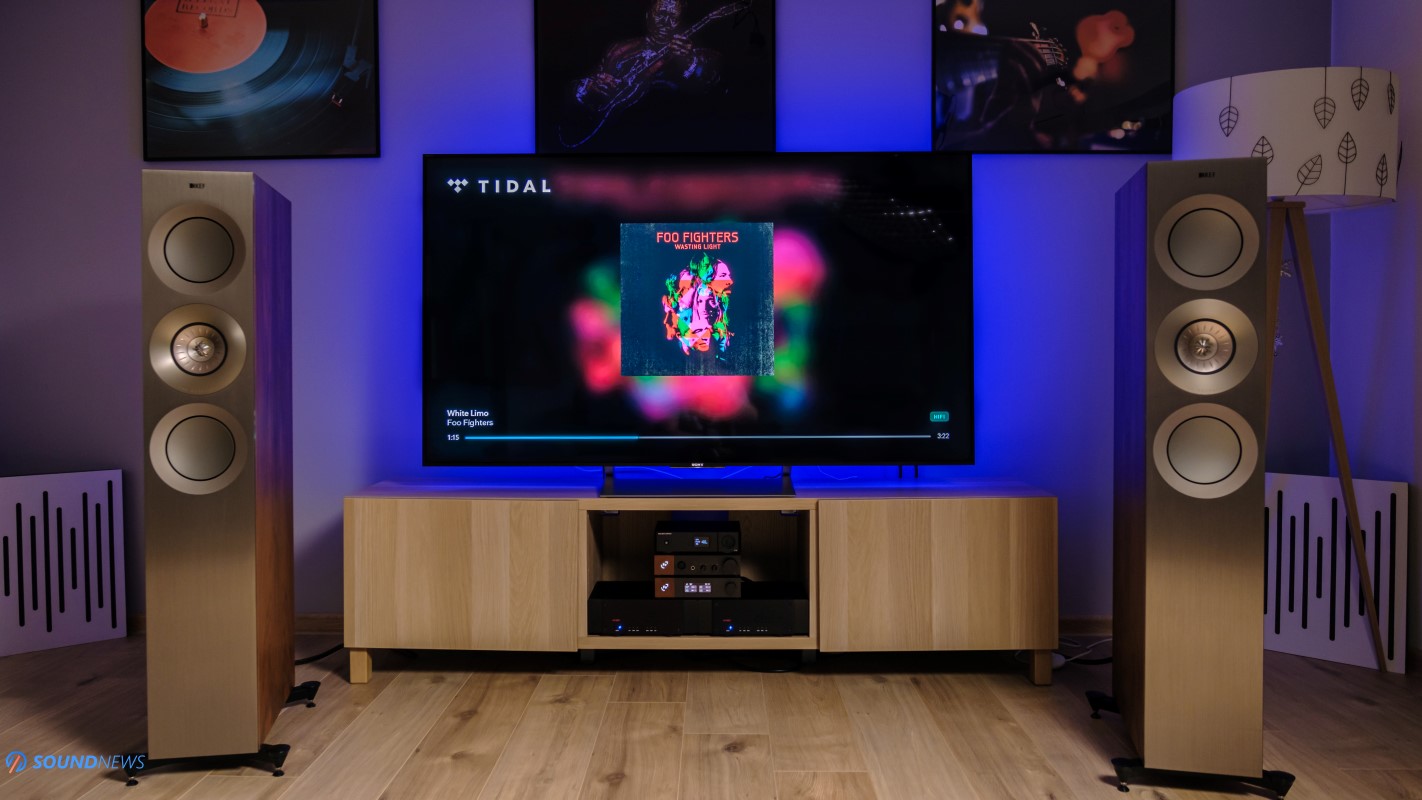
III. Gustard U18 + X18 in a loudspeaker setup
After connecting it to a Ferrum OOR + Hypsos that worked as a dedicated preamp, followed by two Benchmark AHB2 power amplifiers working in mono mode, everything that was felt in my headphone setup, moved over to the living room. X18 presented itself highly engaging, wild and impactful, open sounding and precise when it comes to imaging, as I didn’t have much trouble locating musical notes that were floating around. It was by a hair smaller sounding compared to their X26 PRO, but all other traits remained intact and I was (again) impressed by its resolving abilities, pushing forward everything that might hide in the background, highlighting even the smallest notes and improving their contours.
Usually, ESS-Sabre converters would never conquer my heart when it comes to midrange presence, depth and layering, but I guess with the right components, everything is possible. It put more meat on the bone to the usual ESS-Sabre silicon and a higher engagement factor.
When Wasting Light by Foo Fighters (Qobuz / Tidal) started playing, my mind went from complete relaxation to Friday evening mood. Once this album starts, it’s a race until the end. Yes, it’s loud, it’s rough around the edges, sometimes noisy and unpolished, but oh so satisfying and alive. I always found this record livelier to all their past doings. Fun fact: Forget high-performance ADC converters or Pro Tools for editing. This particular album was recorded with a Studer A827 tape recorder put on Neve analog preamps, hence its natural and full-bodied tonality. Dave’s voice was fuller and weightier, while Taylor’s drums were considerably more visceral and hard-hitting on this album. While wild guitars are playing all over this album, White Limo felt so powerful and distorted thanks to Grohl howling throughout the song. It felt focused and precise in its aggression, as opposed to aimless anger that polluted their heavier songs. Instead of rolling off parts of the frequency response, X18 left it raw, unpolished and explosive sounding, proving that you don’t need high-end converters to make a splash and feel the music as it was intended to sound.
When I removed the Ferrum OOR and let it work as a DAC and preamp, some naturalness went down by a notch, there was less oomph in the bass, but everything else as transparency, speed and control of the drivers remained intact. I played the guess game with and without the Ferrum OOR and there was a difference, but it as wasn’t a big to warrant purchasing separately an expensive preamplifier. The difference was definitely there, but it wasn’t as big as it was the case with entry to mid-level DACs.
While X18 (as most current production DACs) doesn’t have an actual line-amplifier circuit (like Matrix Element X or Rockna Wavelight does), I really liked that Gustard increased the voltage output from 4V on X16 to ~5.2V on X18. If you’re using power amplifiers as I do, that slight boost comes in handy, as you’ll get a little more power and headroom from your amplifiers, without raising distortion to alarming levels.
It worked well when I used it as a DAC + Preamp in my setup, as KEF’s Reference 3 sounded as I know them to be. Their transparent and speedy presentation remained intact, at the cost of being less grippy sounding without a dedicated preamp in the chain. The difference wasn’t that big, but if you would like to color the sound a little, you can certainly add an all-discrete transistor preamp or maybe even an all-tube preamp for that juicy midrange presence.

IV. Transient Response
Looking back at my Gustard X16 review, I remember being impressed by its need for speed and lightning-fast decay of the notes when music was asking for it. However, when trying to land precise bass notes and sustaining them for a little longer, X16 was lacking nerve and a nasty attitude. It wasn’t that bad, but it wasn’t impressive with an X26 PRO near it, that brought the thunder with rock and electronica tunes. X18 preserved the speed, but this time around it gathered more muscle mass, landing harder punches in the bass. It delivered more oomph and more weight down low. It felt as a poor man’s X26 PRO, coming close to it and delivering a punchier sound to its smaller brother X16.
My biggest complaint of X16 was taken care of, as finally my rock and electronica tunes unleashed their might, without the need of expensive amplifiers. From two op-amps on X16, Gustard added six more, crafting a more powerful output stage. The current output is no longer the limiting factor and that was felt immediately when dynamics tried reaching their peaks.
When Perceiving All by Symbolico (Qobuz / Tidal) started playing, my imagination went wild and if you never tried high-quality psy-trance, then it’s the right time to learn something new. Perceiving All is the kind of album that combines reggae, a sunny beach mood with plenty of percussion and deep rumbling bass notes. It’s weird at first, but it will grow on you on the second try. It sounds like an audiophile mix, that’s highly technical, clean sounding and more important than ever, its dynamic range is higher to the usual electronica. There’s throat singing, psychedelia and irregular rhythms, you never know what’s coming next. Choruses? Forgetaboutthem. It’s too boring for them. This album shines brighter on X18 than on four figure R-2R DACs. Its super-fast nature, combined with an instant decay and tremendous impact in the chest are working incredibly well on X18. Perceiving All sounded good to almost great on a Denafrips Terminator Plus, but it was on a higher level on the X18. It got lazy and lightning-fast bass notes for jumping around and I truly believe X18 is an excellent machine when it comes to fast transients. It might not sustain a longer guitar vibration, but it’s mesmerizing with electronica, X18 was made for music like this.

V. Resolution & Transparency
Here’s the deal: if everything you wish for are high levels of transparency and detail retrieval, then there’s no need to invest in four digits converters, as X18 got that fully covered. X16 was already impressive in here, always trying to put as much information as possible on the table, but X18 took that concept one step further, reaching a similar performance with pricier (Topping D90SE, Gustard X26 PRO) and much pricier converters (Matrix Audio Element X). Even without the U18 in place, X18 was able to push forward the tiniest nuances, unearthing absurd amounts of details from my music.
It was able to easily untangle my music, pushing macro and micro-details on the foreground. The usual suspects were in place, rendering them crystal clear and extremely defined. Even bad mastered music sounded impressively clean, as if I was listening to a digital remaster of said records. Connecting X18 to an Enleum AMP-23R that drove a pair Hifiman Susvara was such an eye-opening experience, as words like clinical, boring or bright never appeared on my lips and from an ultra-linear converter, the final outcome was a rich ‘n full-bodied experience, pushing and pulling dynamics like crazy.
Gustard squeezed the last drop of performance from that ES9038 PRO, thanks a powerful I/V and LPF stage, on top of that its channels were paralleled for a higher dynamic range and signal-to-noise ratio. If we’re talking about micro-details, then the little fellow was up there with the best I’ve tried, seriously outclassing entry to mid-level converters coming from the likes of SMSL, Topping or Soncoz.
I’m not sure who mastered the latest Red Hot Chili Peppers – Unlimited Love (Qobuz / Tidal), but after six years of silence, those singles sounded clearer to everything they’ve done before. Gone were the days when I was trying to hear their lyrics, Anthony is more present on the foreground and the swinging beats and grooves were nicely placed to my sides. While groovy and punchy, when things are heating up, everything was still nicely holding together, the stage didn’t collapse on me and I was still air guitaring around. Hot Chillis are back with a bang and I’m looking forward to its April 1st release and no, that’s not an Aprils Fools joke.
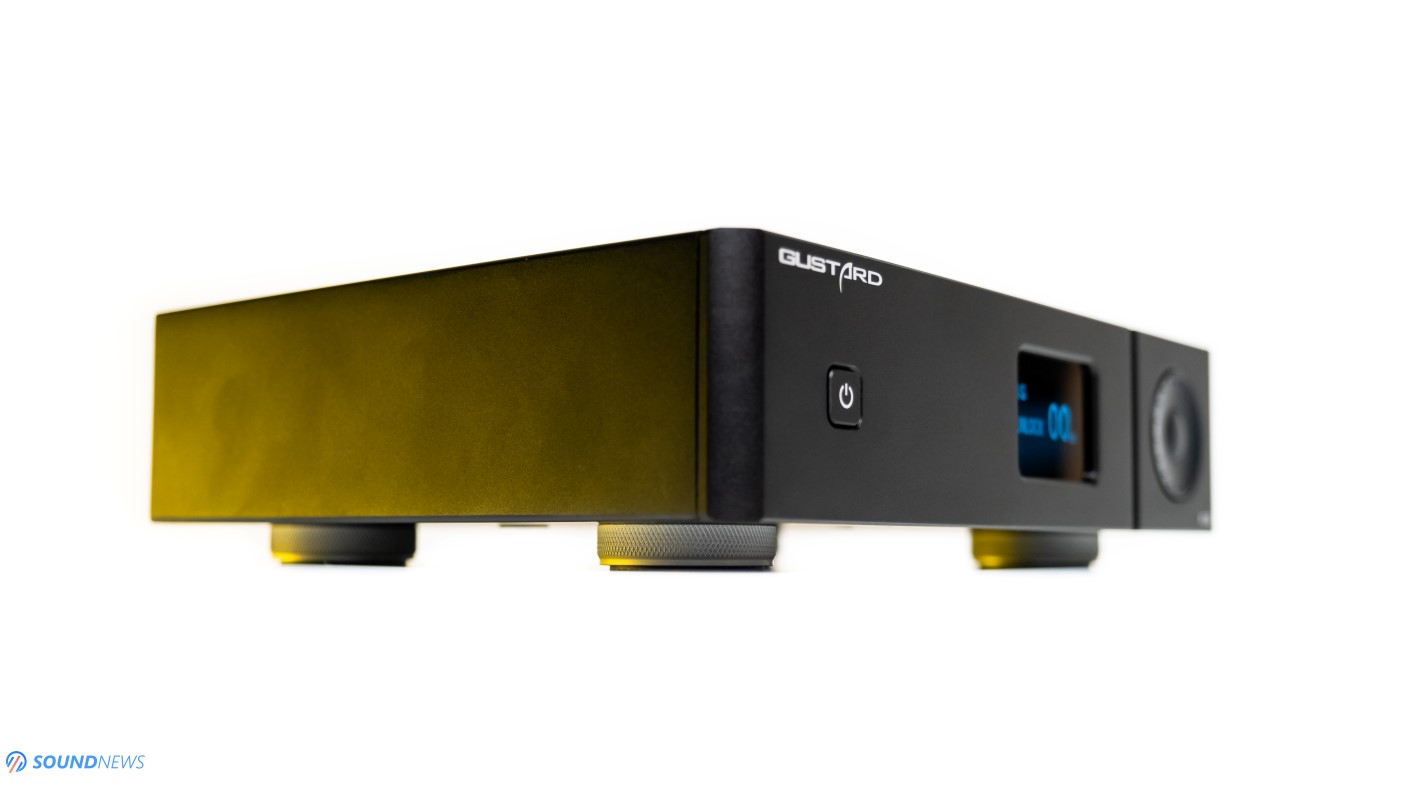
VI. Soundstage & Depth
Besides a somewhat plain boring performance of its precursor and lack of dynamics in busy passages, I wasn’t the biggest fan of X16’s two-and-a-half-dimensional soundstage. I could follow the trail of every musician in the room, I could easily pin-point their instrument’s location, but I wasn’t surrounded by a dense, heavy fog that was oozing out of X26 PRO every time I was hitting play. Gustard’s best was placing the notes on multiple shelves, adding layers that were completely absent on X16.
X18 by comparison added more oomph in the lowest octaves, a higher density in the midrange and I felt that I had more music traveling in the room. Usually when transparency gets boosted and noise floor goes even lower, all that leads to an absolute silence in between passages and I perceived that as a small boost in terms of scale of the music. While there are plenty of mediocre sounding ESS Sabre DACs, when all channels are being used, something unlocks the potential of live music. As far as oversampling DACs are being concerned, you can never go wrong with such a working principle. With U18 in place, I’ve felt as if windows were opened towards by music, there was even more air in between the notes, adding a layer a refinement and effortlessness that wasn’t present before on X18’s USB input.
X18 improved that bi-dimensional sound of its predecessor and if you want the best it could possibly deliver, then use its XLR outputs for the best results. X18’s channel separation is higher via XLR, unlocking the potential of the amplifier that follows and of course of your speakers and headphones.
As for the soundstage itself, if I’m playing live records then more air is gathering around me and if I’m playing regular tracks then everything happens closer to me, obviously X18 can easily increase or decrease the stage size depending on the music that is being played. If your speakers are fully driven, then X18 will be unleashing its big guns, pushing those notes around you, enveloping you fully.
Since Ghost released their latest IMPERA just a few days ago (Qobuz / Tidal), I decided giving it a try. It might be too simple for my tastes, but all things considered, its holiness Papa Emeritus delivered a good performance across the board. When it comes to overly-distorted nature of metal music, the last thing you would think of is layering or scale, but even with open-back headphones on my head, I easily followed guitar and drum solos, without robbing some of my personal space. The chorus on Call Me Little Sunshine was rolling inside my head even after the track finished. All in all, we’ve got an oversimplified and easy to digest metal album that X18 nicely rendered in all its glory.
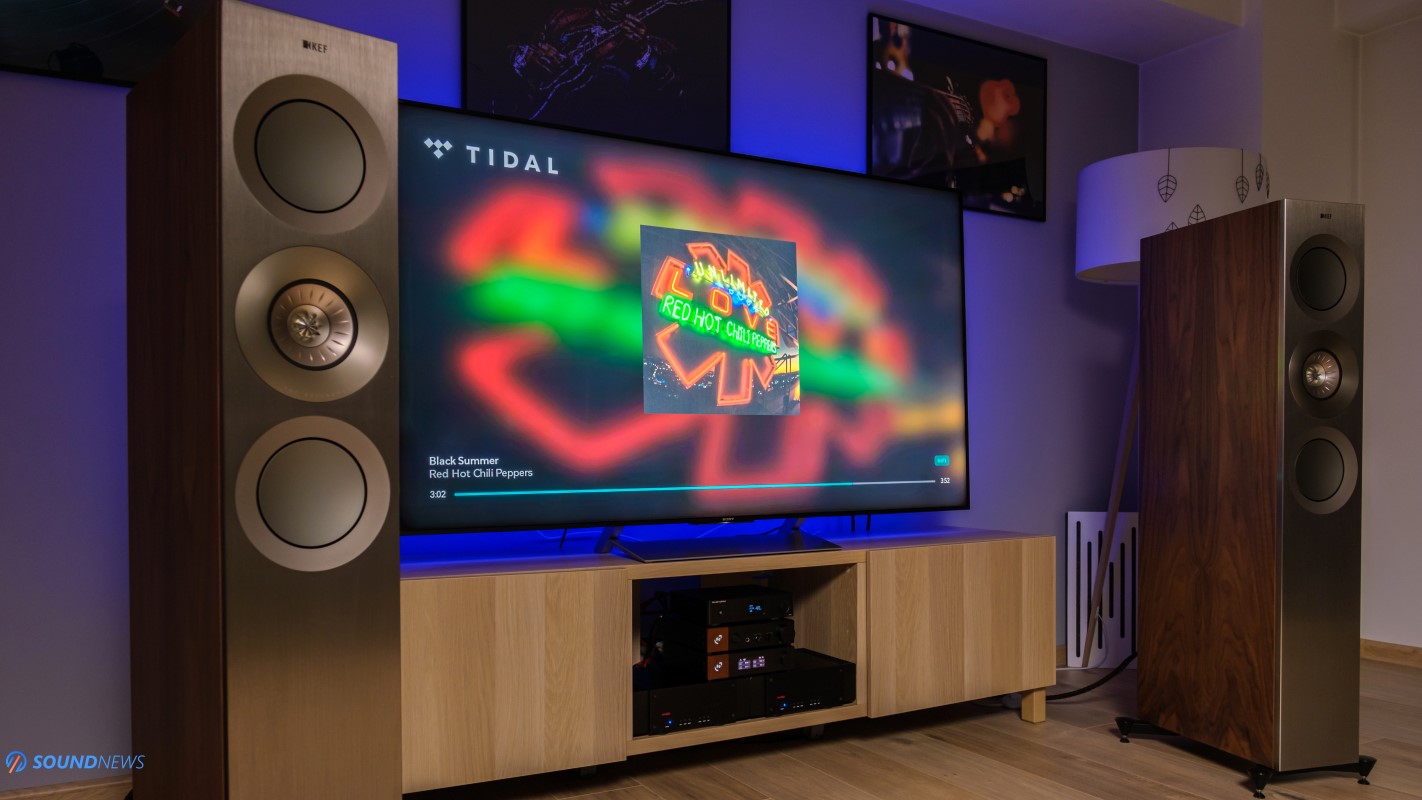
VII. The MQA Experience
I’ve ditched off-line music listening around three years ago, as streaming became a lot more convenient and more importantly, it sounds as good if you’re using the right format. My favorite streaming platform at the moment is Qobuz, as for my rusty ears it sounds better than other services I’ve tried in the past. Qobuz offers music in a lossless 24-bit 192 kHz PCM format and that’s more than enough for me.
If what I’m searching for can’t be found on Qobuz, then I will be continuing my search on Tidal and after that on Spotify. When it comes to high-resolution MQA content, for now there are three services that will be offering such content: Tidal, Nugs.net and Xiami Music in China. Once you have a subscription to any of these, you’ll have access to a wide variety of MQA files that are released on a weekly basis. These files can go up to 24-bit and 96 kHz in resolution with the last bits of information stored in a lossy format.
Now, here is the clever part: to playback MQA content you have two options: software decoding -Tidal desktop app offers such a feature for non MQA-enabled converters or hardware decoding that is split into two categories: by using a hardware rendered or a full-blown MQA decoder – that’s your best option. Luckily, X18 rocks a full blown MQA decoder and once you’ll play such files, an MQA logo would appear on its screen.
Going back and forth between software and hardware decoding, there is a clear difference that hardware decoding just sounds better. So, what’s the difference between regular and MQA content? On a high-end setup, MQA sounded mellower and smoother as if a roll-off was happening in the upper treble and sadly, in the sub-bass as well. If regular PCM sounds a bright and fatiguing, then you can try its MQA version that would calm down the top octave. It depends a lot on your preference and on your rig, but I can say that aggressive music was more manageable as MQA content and audiophile recordings sounded better as a regular PCM files. Your mileage may vary, but this is how my ears perceived the difference. For me, MQA is no longer mandatory, as I’m using Qobuz more often, but if Tidal is still your main streaming platform, then X18 got you fully covered.
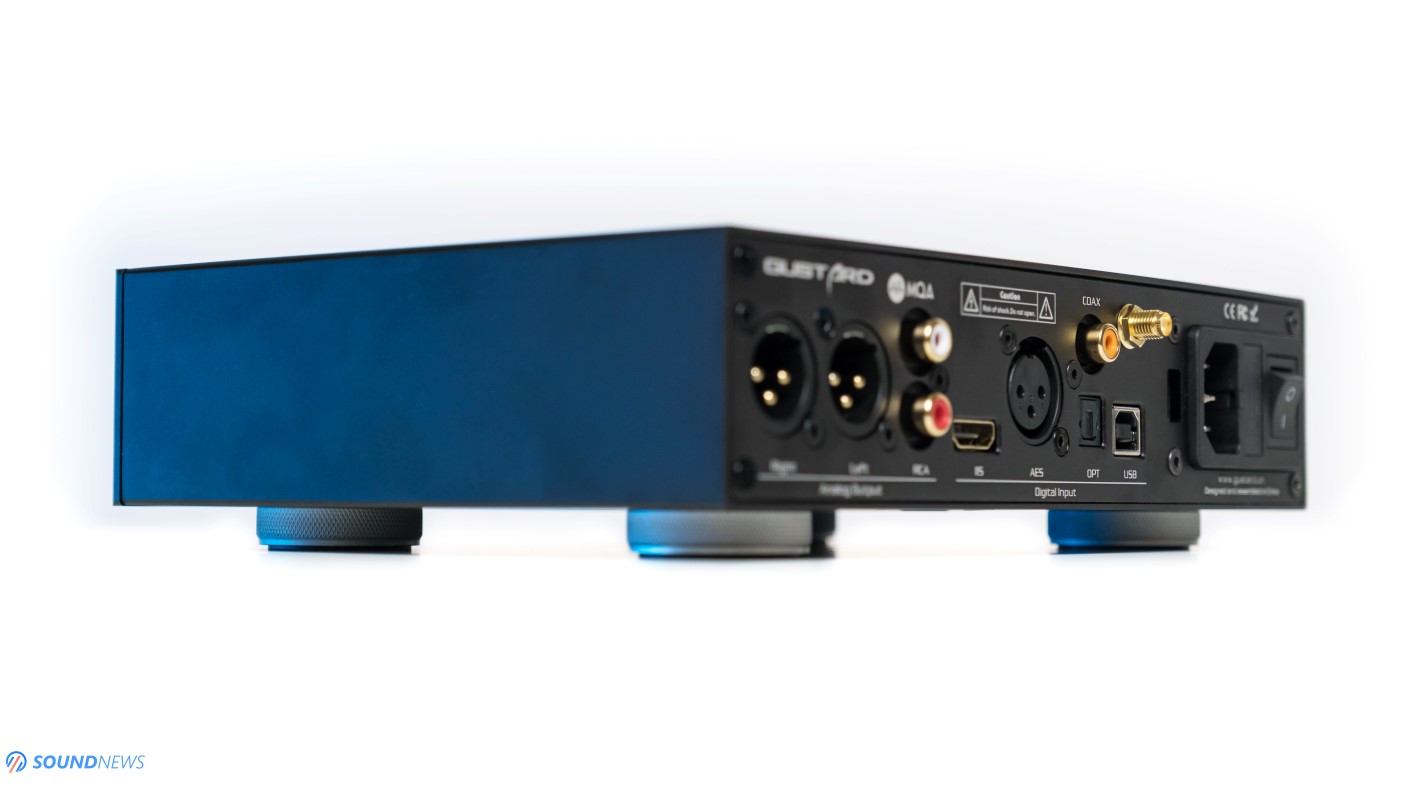
VIII. Frequency Response
I remember my Gustard X16 experience as if it was yesterday, it was good when it came to treble delivery, it was less impressive in the midrange and quite shy when it comes to bass and in this regard, the newest X18 feels like a substantial upgrade.
A. Bass
My biggest gripe with X16 was its lightweight, almost ethereal bass performance that didn’t make me move to the rhythm of the music. It lacked oomph and bass punch, putting a higher stress of the amplifier that followed. X18 rocks a beefier analog stage and that improved its bass delivery across the board. Hearing visceral sub-bass notes is no longer science fiction, as even regular blues felt fuller and weightier sounding. X18 is more powerful down there, it’s clean, speedy and impactful. It’s harder slamming to its precursor and there’s a higher density in the mid-bass as well. It was able to sustain longer double-bass nicely and with faster electronica everything sounded precise, fast and in a detailed manner. If there’s a frequency region that stands out, that’s definitely its bass output that was fuller and juicier sounding. If you’re searching for a fun and engaging sounding DAC, that puts a higher emphasis on low-end delivery, then X18 is definitely that unit.
B. Midrange
Its mid-section felt as clean, defined and detailed, but I wouldn’t call it overly dense or soul-grabbing. Traces of warmth were still present, voices were rendered naturally, string-based instruments had a nice vibration, without going overboard to the warm side. It is neither of those…it’s mostly linear and neutral in this department, approaching my linearity curves and trying to disappear from my acoustic chain as much as possible. If you are hunting for warmth and a lot of smoothness, it will disappoint you a little. You can mitigate that issue with the help of an all-discrete amplifier, be it solid-state or tube-based. On the plus side, X18 sounds smoother and calmer in here, even effortless at times, something that X16 couldn’t do on its own. Add that U18 DDC and lo and behold, a warmer tonality would hop on board and deliver livelier voices. U18 did put more meat on the bone, especially in the midrange department that was more vibrant and alive.
C. Treble
By default, ESS-Sabre converters are extremely potent in here, so I won’t be too flowery. Treble heads will appreciate its ability to show off everything that’s hidden in the top octave. Percussion work, snare drums and bells were sharp and outlined. In the first days, X18 sounded hotter to my liking, adding an unwanted ringing with treble intensive music, but a week later that’s no longer the case. It’s important having an extended and linear frequency response, so it could cover your entire music collection and I believe X18 got that fully covered. X16 was sometimes metallic and fake sounding, but I can no longer attribute such words to Gustard’s newest creation. I’ve experienced strong leading edges, snappy cymbals, impactful snare drums and shimmering tambourines, without the usual grain and harshness.
All in all, I’ve got a fuller tonality, a denser midrange and a stronger bass performance that transformed the X18 into one of the best converters below the $1K mark.
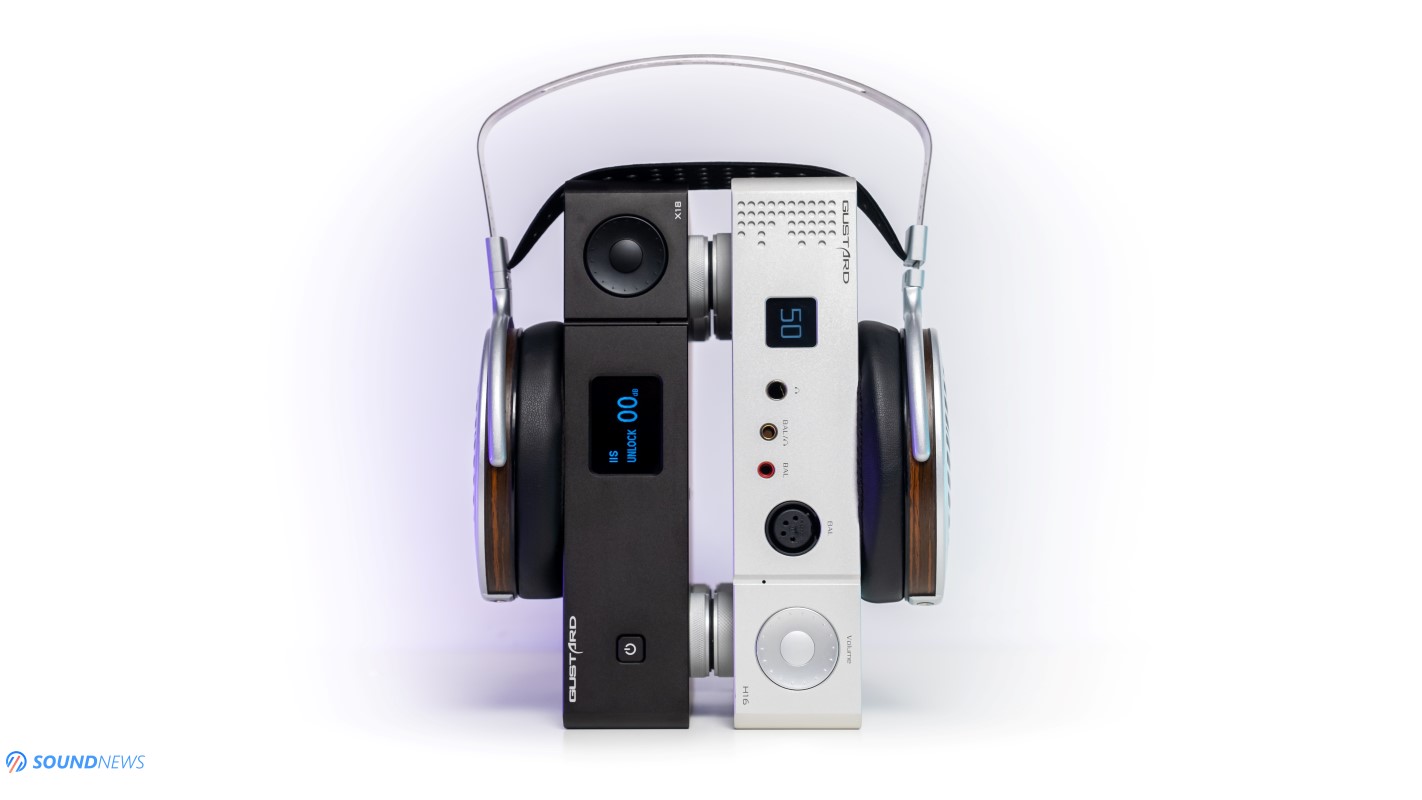
My Conclusion
In the last two years we’ve got some amazing sounding converters coming from Asia and this trend won’t wobble anytime soon. With X18, we’re got a richer tonality, a higher engagement factor, a wider sound field, a better bass delivery and higher dynamics when crowded tracks paid me a visit. The difference was even bigger in a stereo setup, where a higher voltage output did wonders with two mono amplifiers, so much so that I don’t see the point in getting a dedicated preamplifier with X18.
You’re looking at a unit that was as detailed and transparent as the best DACs I put my hands on. It’s fully loaded with a lot of goodies, you get a full MQA decoder, the best Bluetooth codecs are on-board, plus it is a fully balanced DAC and preamplifier with endless possibilities. Gustard seems to be learning fast from their past mistakes, everything that wasn’t great on X16 was taken care of and for all of the reasons combined, X18 got a well-deserved silver award!

Considering its top-grade build quality, outstanding feature set, fully loaded configuration and top sonics, I consider it a steal at $749. Gustard X18 was kindly provided by Aoshida Audio and it can be purchased from their web-store by following this link and you can get the U18 by following this link. They are offering free world-wide shipping and a full warranty support.
If you get one, please come back and leave a comment below, I’m curious to know how it performs in your stereo or headphone setup.
PROS (X18):
- Safe packaging, immaculate build quality
- The best metal feet I’ve seen on a DAC
- Feature packed to its teeth, easy to navigate user interface
- Neutral tonality with a hint of warmth that suits a wide variety of music
- System matching is no longer a thing with X18
- A higher voltage output squeezes more power from your amplifiers
- A wider and deeper sound field compared to its predecessor
- Precise location of all the notes around the listener
- Ultimate levels of transparency and detail-retrieval, nothing can hide from its gaze
- Extended frequency response at both ends
- A much better transient response to its precursor, bass slam – welcome back home!
- Background noise is nowhere to be found with sensitive IEMs or loudspeakers
- Wide selection of digital inputs and analog outputs
- Good preamp section
- As good as it gets below the $1k mark
- One of the best values right now
PROS (U18):
- Completely removes grain and metallic trebles
- Completely removes all traces of noise coming from your source
- Adds a layer of refinement and smoothness that would normally surround R-2R DACs
- Improves pace, rhythm and timing of your DAC
- Adds an additional layer of information, unlocks a higher transparency
- Boosts (by a hair) the sensation of a breathable sound
CONS (X18):
- I didn’t find cons at this price point, hats off Gustard!
- I only wish for a nicer English website, current one still looks like a mess
CONS (U18):
- None
ASSOCIATED EQUIPMENT:
- DACs: Gustard X18, X16, Denafrips Terminator Plus, Rockna Wavelight, Audiobyte HydraVox & HydraZap, Gold Note DS-10 Plus & PSU-10 EVO, SMSL VMV D2, FiiO K9 PRO ESS
- DAPs: Hiby RS6, FiiO M17, M11 Plus ESS, Shanling M8
- Headphone Amps: Ferrum OOR + Hypsos, Flux Labs Acoustic Volot, Enleum AMP-23R, Burson Audio Soloist GT, Trafomatic Primavera, several Topping, SMSL & Gustard units
- Preamps: Musician Monoceros
- Power Amps: Benchmark AHB2 (x2), Burson Timekeeper 3i
- IEMs: FiiO FH9, FH7, FA9, FA7S, FD7, Meze Rai Penta, LittleDot Cu KIS, Kinera Skuld, 7Hz Timeless & others
- Portable headphones: Sony WH1000-XM4, Sennheiser Momentum 2, Meze 99 Classics
- Full-sized headphones: Hifiman Susvara, HE1000SE, Arya Stealth, Sundara, Audeze LCD-5, LCD-4, Erzetich Phobos V2021, Phobos V2018, Erzetich Mania, Kennerton Rognir, Magni, Gjallarhorn, Vali, M12S, Apos Caspian, Sendy Peacock, Apollo, Aiva & others
- Loudspeakers: KEF Reference 3, Sound Of Eden Crescendo UNO
- Interconnects: QED Reference (x2), Topping TCX1 (x2)
- Speaker cables: Kimber PR8, Audioquest Type4
- Power Cables: Isotek EVO3 Premier (x3), iFi Audio SupaNova (x2)
- Balanced Isolation Power Conditioners: PLiXiR Elite BAC1500 (stereo setup), Elite BAC400 (headphone setup)


